Variography and Field Notes

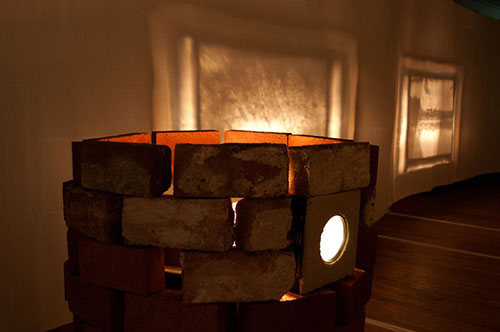 Variography (installation view), 2012 |
The Other New York, 2012
"The Other New York: 2012 was a community-wide, multi-venue biennial exhibition that was the result of a major collaboration among twelve art organizations in Syracuse. This ambitious project aimed to highlight the rich talent of artists across Upstate New York, with a special focus on Central New York and the surrounding counties. The project will offered diverse arts venues and outdoor public spaces for contemporary creative expression on a scale not before seen in Syracuse. In addition, TONY: 2012 demonstrated the power of artistic partnerships to boost public awareness of the arts by presenting opportunities for the community to connect with exhibitions, programs, and events offered simultaneously throughout the city." - Everson Museum
My project for TONY 2012 involved two site-specific installations inside and outside of the Erie Canal Museum. The exhibition within the museum ran September 14 through November 5, 2012. Field Notes, the public art component of the project, is still installed. |
|
Variography and Field Notes, 2012
Inside the museum, four-foot tall brick columns containing magic-lantern projectors within which the film is suspended in a tank of water. Water is an important component of the work, as it was in the formation of the city. Each brick and metal projector in the museum contain a halogen lamp, lens, and a tank of water in which sheets of recently shot large format film are suspended. As the lamp heats the water the image projected is the photograph being boiled. As each sheet of film is destroyed, a new one replaces it.
The materials and forms of the devices reference the city’s industrial and shipping past, as does the water inside the mechanisms. A photograph is the result of the confluence of the photographer and subject in time and space. Looking at a photograph is like looking at a place from the back window of a moving car as it recedes into the distance. The imagery of the cameras and projectors is generated within the devices rather than recorded and presented. The viewer’s experience is first-hand, as witness and participant rather than from a great distance. The event being watched as the images are projected isn’t the photograph taken in the past but the destruction of the image in the present. |
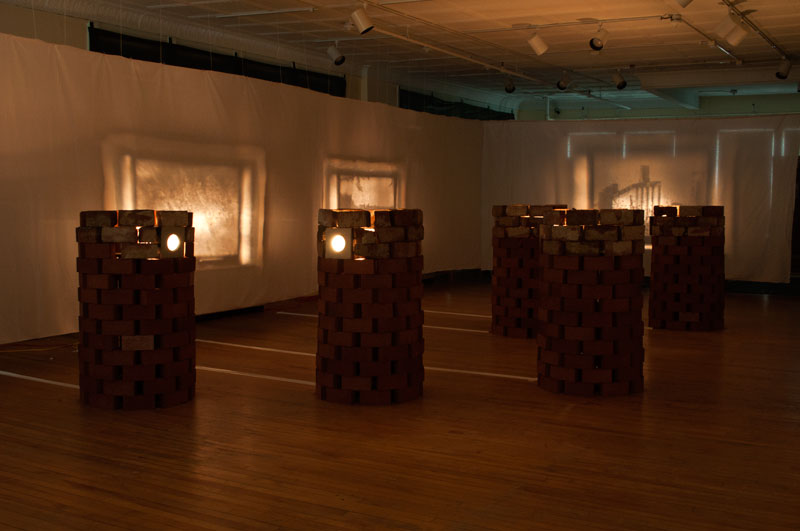 Variography (installation view), 2012  Variography (installation view), 2012  Variography (installation view), 2012  Variography (detail of a projector), 2012 Field Notes, 2012
Outside stand camera obscurae built of cement on heavy wooden tripods. A camera obscura is a device dating back to at least the Renaissance used by artists to study a scene to create a more accurate representation. The cement cameras make use of a lens, screen, and a tank of water through which the image is viewed. Printed lightly on the screen are historic photographs of Syracuse. Looking through the camera, the viewer sees an amalgam of live imagery and photographs from the past both reflected under the surface of the water in the tank. 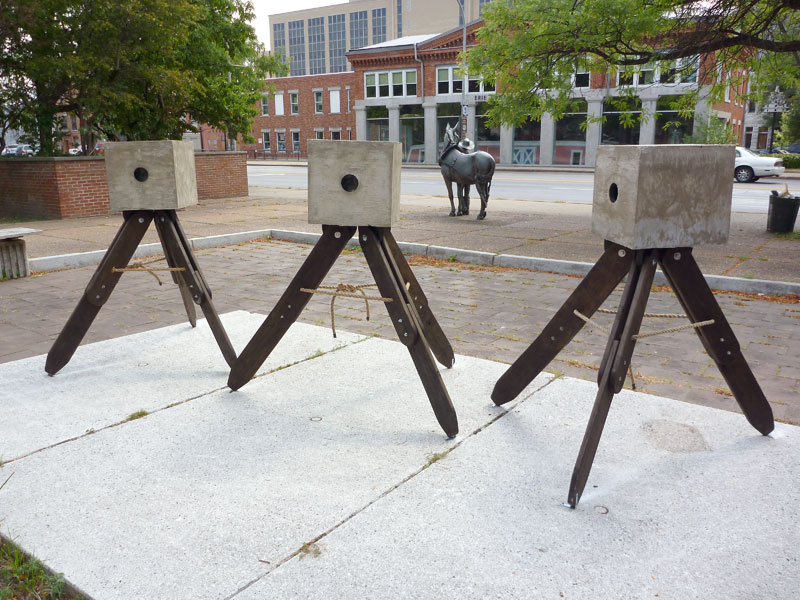 Field Notes (installation view), 2012  Field Notes (installation view), 2012 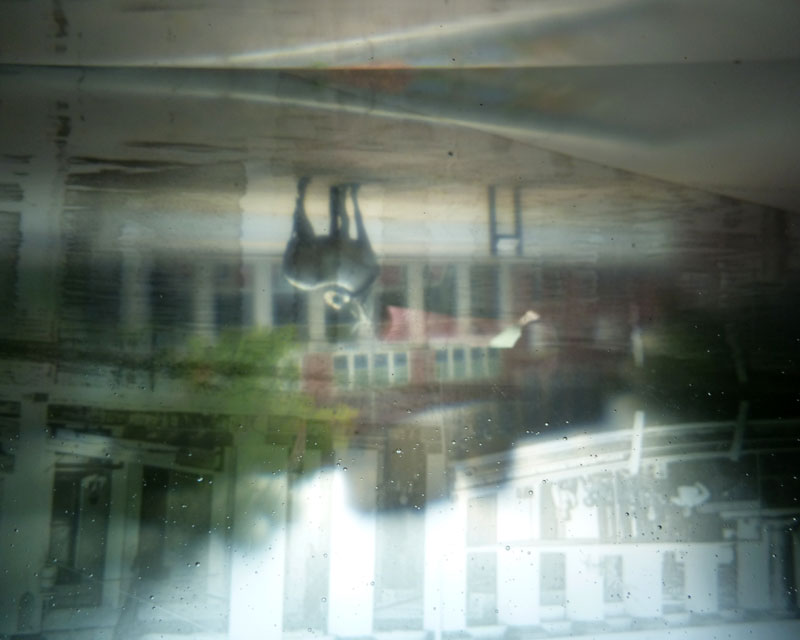 Field Notes (view inside the camera), 2012 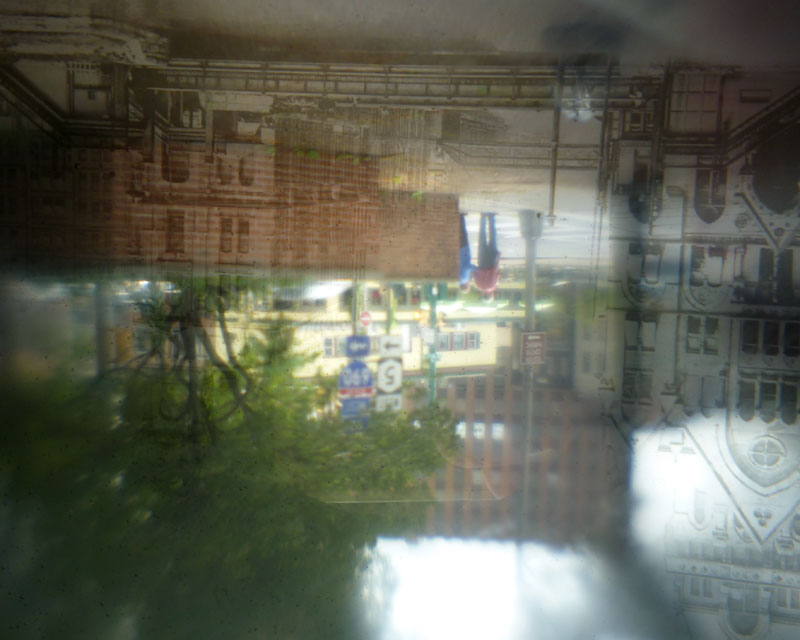 Field Notes (view inside the camera), 2012 |